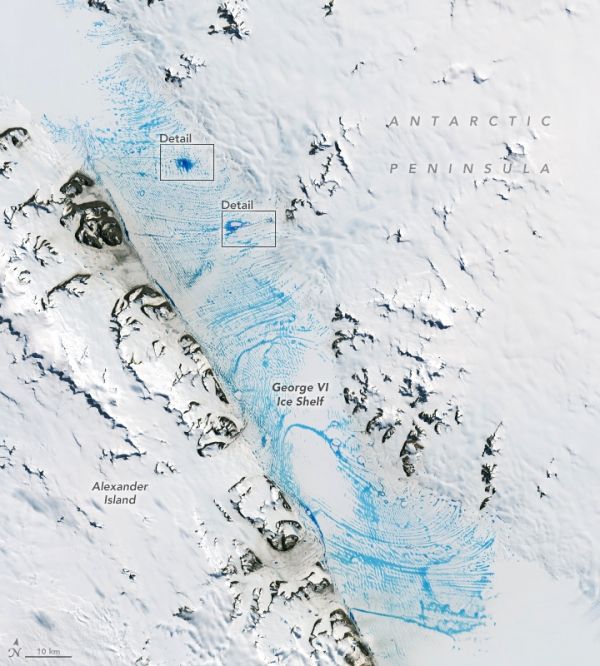Even in frigid Antarctica, summer warmth can turn ice into water. At the peak of the 2019-2020 melt season, jewel-toned ponds of meltwater spanned a vast area on the George VI ice shelf—a huge slab of floating glacier ice attached to the western side of the Antarctic Peninsula.
These images were acquired on January 19, 2020, by the Operational Land Imager on Landsat 8. Christopher Shuman, a University of Maryland, Baltimore County glaciologist based at NASA’s Goddard Space Flight Center, noticed the melt in the Landsat images. He noted: “It is the only complete view of such a widespread surface melt event on the George VI Ice Shelf captured in the nearly 50-year-long Landsat record.”
Alison Banwell, a glaciologist at the University of Colorado Boulder who currently has a three-year fieldwork project on the shelf, noticed the melt in images acquired that same day with the European Space Agency’s Sentinel-2 satellite. “This is the biggest melt event we know to have occurred on the George VI ice shelf,” she said.
Continue reading at NASA Earth Observatory
Image via NASA Earth Observatory


